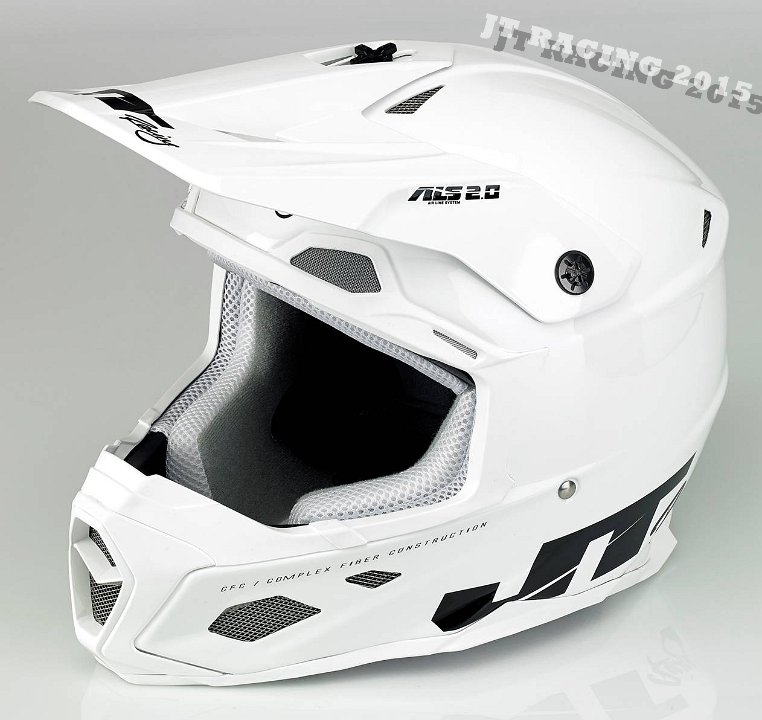

A year later, JT had a dual-stage filter of his own to sell, the Phase II. JT had been one of Twin-Air’s earliest US distributors (through their partner Hallman, an early investor in JT), but the two had a falling out in 1974 over the marketing of the product. Twin-Air’s breakthrough in 1972 had been the use of special dual-stage foam that could trap small particles, while still allowing maximum flow to the motor (this was a quantum leap in technology over the easily clogged paper filters common to the era). The design for the Phase II actually came out of John Gregory’s association with Holland native Bob Twin, the founder of Twin-Air filters. The Phase 2 filter was introduced in 1975 and quickly became the filter of choice for factory Maico, Yamaha, Bultaco, Husqvarna and Suzuki. One of JT’s biggest hits in the seventies actually had nothing to do with riding gear.

Yeah, probably WAY less padding on the palm, but you know what I mean? Matthes: This glove came out in 1974 and in 2017, companies are selling the same basic version of this. In 1975, they would add a Hiekki Mikkola model, then in 1976 they would bring out “The American”, a bicentennial red, white and blue version marketed with Honda’s Marty Smith. This model, designed in cooperation with World Motocross Champion Rolf Tibblin, featured a lambskin construction, with extra padding for the palm and thumb area. In 1974, JT Racing introduced the first of what would become a line of rider-replica gloves. Matthes: Nylon! Great idea, right? Thanks for nothing Thomas…
#JT RACE GEAR FULL#
They offered a full lineup that included socks, jerseys (is it just me, or does this jersey look more appropriate to a chain gang than a motocross course?), and the industry’s first nylon pants they titled “Unleathers”.

Stupid JT…īy 1973, JT Racing had become a full-time business for the Gregorys. A cotton sock was the start of a multi-million dollar company! It just takes one idea as simple as this. Matthes: I’m always telling Jason Thomas to invent something and here’s why. At $5.95, they proved a huge hit and provided the basis for what would become a motocross apparel empire. The socks were 95% cotton (as opposed to the itchy wool socks that were common at the time) and available in several bold colors. JT Racing Import’s first product in 1967 was a sock sourced from a manufacturer in Mexico. If you want to listen to John Gregory get into detail about the rise and fall of JT Racing, listen to Matthes’ podcast with him HERE Here is the history of JT Racing from the sixties to the eighties, viewed through the ads that helped make them famous.

Partnering with Torsten Hallman Racing (today’s THOR) to distribute their products, JT Racing Imports quickly rose from a Mexican sock importer into one of the most influential brands the sport has ever seen.
#JT RACE GEAR PLUS#
Selling mostly through mail order, JT Racing Imports (named by Rita in an inversion of the initials of the sock’s place of origin, Tijuana or “TJ”) quickly expanded through their relationships with world famous racers like Torleif Hansen, Lars Larsson and Joël Robert (JT’s first sponsored rider, at a paltry $100 plus product).īy 1972, JT had expanded to include products like motocross jerseys and the industry’s first nylon motocross pants (prior to this, motocross pants were made of actual leather, hence the nickname “leathers”, a term that persisted long after the leather era had passed). Their socks were colorful and, being made from cotton, far more comfortable than the typical wool socks common at the time.īy 1970, the pharmacy was closed and the side business had become a full-time operation for the couple from San Diego. Selling socks sourced from Mexico out of the back of their truck and from a display in their pharmacy (John’s real job was a pharmacist), the couple was pleased to find there was actually a market for high-quality riding socks. Started in 1967 by John and Rita Gregory, JT Racing began as little more than a side project to supplement John’s racing expenses. This is the era where the brand was most successful and solidified its reputation as one of the sport’s true powerhouses. In this installment, we are going to touch a little bit on JT Racing’s roots in the sixties and seventies, but focus mostly on the eighties. For part 3 of our PulpMX gear history series, Matthes and I take a look back at one of motocross’ most iconic gear brands – JT Racing.



 0 kommentar(er)
0 kommentar(er)
